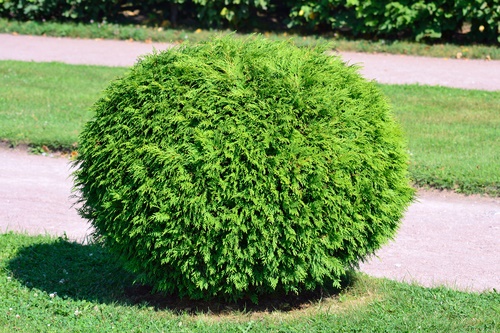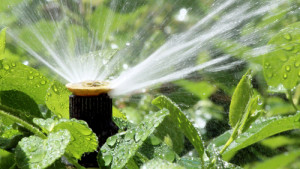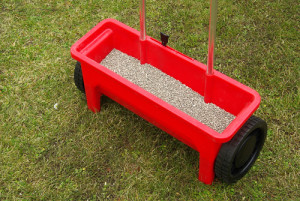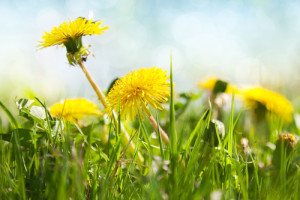Archive for Lawn Care
7 Gorgeous Flowering Shrubs for Shade
A shady yard doesn’t have to stop you from having a gorgeous, lively landscape. Flowering shrubs that thrive without direct sun are a perfect choice for jazzing up your landscape, and there are many varieties to choose from. Here are our top 7 choices for flowering shrubs that work well in Zone 9:
Oakleaf Hydrangea (Hydrangea quercifolia species)
With its spikes of beautiful white flowers and distinctive oak tree-shaped leaves, this shrub attains an impressive height and width of six to 10 feet and is partial to moderate shade. In late summer, its blooms change to a pinkish purple, and come fall, the leaves take center stage and put on an impressive show of orange-red, purple and brown, which lasts well into winter.
Rhododendron (Rhododendron species)
A shrub with its own fan club, there are more than 900 species of the Rhododendron. Most grow to a height and width of eight to 10 feet, bloom in late spring, and then present attractive foliage after that. This is the shrub to choose if you’re looking for colorful shade flowers – and with all the different varieties on the market you’ll have no problem finding your favorite color.
Serviceberry (Amelanchier species)
Another shrub with multiple varieties to choose from, you’re sure to find one that meets your yard’s aesthetic needs. The company running serviceberry is a compact four to six-foot shrub that’s perfect for smaller landscape layouts. A year-round winner, blooms debut in the spring and edible berries make a June appearance. Those who love low maintenance shrubs will love that it requires little pruning.

Japanese Kerria (Kerria Japonica species)
Slow to start but followed by rapid growth, this three to six-foot shrub is the one to choose for year-round color. Bright green leaves that appear in summer last through most of the fall, when attractive yellowish green or bright green stems appear to brighten up your winter landscape. Gorgeous, bright yellow blooms make a spring appearance.
Virginia Sweetspire (Itea Virginica species)
With vivid red leaves that last well into the fall, these four to five-foot shrubs burst with fragrant summer flowers and are extremely resistant to disease or insect problems. The Little Henry is a popular choice that gives better-known shrubs such as the burning bush a run for their money.
Red Chokeberry (Aronia Arbutifolia species)
Stunning crimson leaves in the fall and bountiful red berries that brighten up even the drabbest of winters, these shrubs grow from six to 10 feet high. The red chokeberry is a resilient shrub that does well even in poor soil, and it tolerates both wet and dry conditions. Glossy summer foliage complements the small white or red-tinged blooms that make their appearance in the spring.
Sweetshrub (Calycanthus floridus)
A versatile classic, this moderate-shade shrub continues to gain popularity due to its xeriscaping properties. It works well in dry to damp soil and grows from four to six feet tall. The sweetshrub’s maroon flowers bloom from spring to summer and are often highly fragrant; the leaves on these shrubs have a coarse texture. If you have a yard that sees frequent visits from deer, this is the shrub for you.
Finding just the right shrubs to plant in the shady areas of your landscape may seem like a challenge, but as these selections show, there are plenty of varieties to choose from. Whether you choose one particular species as a show-stopping focal point or mix and match several kinds, these recommended shrubs should bring some beautiful color and life to even the most sun-deprived areas of your yard. Contact us for consultation on your gardening project.
Planning and Maintaining a Shrubbery
Rock gardens and shrubberies might be the two best ways to add dimension to your landscaping efforts without breaking the bank or giving yourself more work down the road. Just like a rock garden, shrubberies are coming back in style!
Shrubberies are actually easy to maintain and take care of as well. Shrubs are technically woody plants that are far shorter than most trees yet have a network of stems that can really liven up a backyard or add a little privacy to your home’s front facade.
Flowering broom shrubs and rhododendrons even look beautiful in their own right and don’t need too much support from your annuals and perennials to enliven your home.
That said, a lush lawn never hurts, so if you need help in that department DK Landscaping is here to lend a helping hand. DK Landscaping can also help with irrigation.

Planting a Shrubbery on Your Property
Shrubs are normally under ten feet in height and can either be evergreen or deciduous. This means that you can expect to find two classes of shrubs – one of which loses its leaves every autumn and then grows them back come springtime (deciduous) and the other kind of shrub retains its leaves on a year-round basis (evergreen).
- Leaving Room to Grow
Two other factors that you need to consider right off the bat is the maturity of the shrub that you’re interested in and, secondly, making sure that that shrub has enough room to grow without crowding out its neighbors.
The maturity and species of the shrub you go with will go a long way in determining how much space you need between each shrub and whether you’re letting in too much (or too little) sun to all of the shrubs you’ve planted as they go along in their growing cycle.
As an example, a shrub that’s much more bush-like and grows vertically like a arborvitae will require less sun, root space, and maintenance since it’s an evergreen and its stems don’t tend to blossom horizontally.
Bamboo palm or barberry, on the other hand, are actually quite low to the ground and need a little room to blossom out horizontally, so you’ll want to leave adequate space between each one and enough daylight so that the sun can reach down and nourish each individual shrub.
- Dig a Wide Hole
After you’ve picked out which shrub goes with the surrounding flowers and accessories in your yard, you need to transplant your shrubs and get them into the ground safely.
Digging a hole double the width of your shrub’s root ball is a good way to ensure that the roots get nourishment. After you’ve dug your hole then make sure to jostle the soil around slightly so that you’re not dealing with packed soil and your shrubs can continue to get nourishment.
- Transplanting the Shrub
When your hole is dug, carefully lower the shrub into place and put soil around the base. Then you’re going to want to spread out some mulch at the shrub’s base – just make sure that you go no more than six inches deep with your mulch.
- Regular Maintenance and Watering
Shrubs grow best in moist conditions that avoid too much saturation.
This means that regular watering from March to August in four-season climates should, in conjunction with some help from the sun and mother nature, provide most of the nourishment that your leucadendrons, rhododendrons, buckthorns and butterfly roses need to flourish.
An irrigation system is one of the best ways to prevent water waste and over-watering. For more on shrub maintenance and irrigation, contact DK Landscaping’s specialists today.
Lawn Fertilizer – Fall Vs Winterizer Fertilizer – What’s the Difference?
If you own property, you probably know that you should fertilize the lawn. However, some home and business owners are unaware that lawn fertilization should be performed more than once per year. Fall fertilizer is required as is winterizer fertilizer. The winter variety is specially designed to help your grass make it through the winter while the fall fertilizer serves its own unique purposes. Let’s take a closer look at the differences between the two.
Fertilizer Overview
It is important to note that just about all bags of fertilizer have three numbers on the front. Each represents one of the primary ingredients within the fertilizer. These ingredients stand for potassium (K), phosphorous (P) and nitrogen (N). In general, lawn fertilizer formulas typically have a formula of 29-3-4. This means that the fertilizer has 29 percent nitrogen, 3 percent phosphorous and 4 percent potassium. Both fall and winterizer fertilizer stimulate root growth. Yet each contains its own unique mix of potassium, phosporous and nitrogen.
Fall Fertilizer
Fall fertilizer is specially designed to stimulate the growth of new roots. It contains a delicate balance of potassium and phosphorous designed to spur growth. This special blend allows the grass to “dig in” and prepare for the rough winter weather. Additionally, fall fertilizer sets the stage for the lawn’s roots to make full use of the winterizer fertilizer that will be added later in the year. Fall fertilizer works best when applied to soil that has a temperature that has dropped to a 70 degrees Fahrenheit. Yet it will not be as effective if applied when the soil temperature dips below 55 degrees.
Winterizer Fertilizer
Many lawn care experts are adamant that winterizer fertilizer is the most important of all fertilizer applications. It helps the roots of the grass absorb and store nutrients as they continue to grow until the ground eventually freezes at some point in the winter. These nutrients are then readily available when temperatures increase in the spring season.
Winterizer fertilizer should be applied about four to five weeks after the application of the fall fertilizer. Ideally, this will occur at some point in October or November. By this point, the new (but empty) roots have formed and the ground is moving toward the freezing mark. It is specially designed with high levels of nitrogen to promote the accumulation and storage of carbohydrates before the soil freezes. This nitrogen is held in reserve throughout the winter, in anticipation of the spring growing season. Winterizer fertilizer also contains more potassium than regular fertilizer. The role of the added potassium is to boost the grass’s tolerance for the cold and bolster the root systems.
Winterizer fertilizer does more than just prepare the grass for the nasty winter ahead. It also functions to feed the grass throughout the winter to keep it healthy and a lovely green shade (yes, even throughout the winter). Apply winterizer fertilizer in the proper amount at the right time and it will help your grass look an even more gorgeously rich green when the spring season rolls around a few months later. Aside from increasing grass aesthetics in the winter and spring, winterizer fertilizer’s influx of nutrients also induces quicker “green-up” growth in the early days of spring.
Your Lawn Deserves Both Fall and Winterizer Fertilizer
Do your lawn an enormous favor by applying both fall and winterizer fertilizer at the appropriate times. If you have any questions or concerns about your grass, landscaping or other outdoor maintenance issues like irrigation, water conservation or general repairs, do not hesitate to reach out to us for assistance.
The Necessity of Irrigation
You want an awesome lawn. When you invest in landscaping service, you expect your lawn’s greenery — your greenscape — to remain beautiful and awesome for a very long time. Despite the fleeting nature of plants, maintaining a beautiful greenscape throughout the year is very possible. To this end, one of the most important things for you to do is to have an irrigation system installed. Although these systems are often only thought of as something for growing crops, irrigation is actually a necessity for your lawn. This isn’t just a matter of watering your plants either. Let’s take a look at why irrigating your lawn is so important for it’s health.

Irrigation Makes Your Greenscape More Durable
Rainwater and hand-poured water only moisturize plants at the surface level. Their roots, however, go very deep into the ground. This means that under normal circumstances, the bottom of your roots are extremely dry. That’s like only dipping your legs into the pool on a 100 degree day, while leaving your torso to be burned by the scorching sun! Such dryness makes it a whole lot harder for your plants to resist tougher conditions, because in addition to having dry roots, they won’t be able to gather up enough water for their plant bodies.
Irrigation solves this problem by collecting water and sending it straight down to your plants’ roots, resulting in a wet, sturdy greenscape.
Irrigation Makes Sure That Your Greenscape Evenly Grows
A bright, healthy lawn can still look patchy. This happens when your lawn gets different amounts of water in each area. When this happens, some plants are bound to grow way faster than others, resulting in an ugly, patchy appearance for your lawn. This sucks!
Irrigating your lawn lets you evenly distribute the water that gets into your lawn. This way, the patches of grass near the patio will look exactly the same as the strips of grass lining the patio.
Irrigation Protects Your Greenscape From Droughts
California isn’t the only place that has had water problems in the past. You don’t have to be in a desert to end up in a drought. In fact, low rainfall can happen just about anywhere — unless you live inside of a rain cloud! When a drought happens, your lawn’s greenscape will be among the first things to be harmed. This is because plants rely on water even more than we do to live long, healthy lives.
A good irrigation system can fully protect your lawn’s plants from a drought by spraying water on the plants regularly, even if it doesn’t rain all season.
Irrigation Reduces Your Workload
Even if you have two green thumbs and green big toes, maintaining a lawn isn’t easy. One of the hardest parts of this process is making sure that your plants get all of their proper nutrition. An irrigation system handles the lion’s share of the workload needed to keep your plants healthy, because they will provide them with all of the water that they need on a daily basis. In fact, if your lawn has plants that crave more water than usual, your irrigation system can send plenty of water to your plants multiple times per day.
Irrigating Your Greenscape Takes The Worry Out of Lawn Care
Having an awesome lawn is your goal. Achieving that goal shouldn’t be such a hard thing to do. By investing in a lawn irrigation system, you will make sure that your lawn is absolutely awesome at all times. Contact us to learn more about the benefits of lawn irrigation, and what types of systems are available.
Lawn Treatment Tips to Prevent Crabgrass & Dandelions
Nothing ruins a lawn’s uniform, well-manicured appearance like dandelions and crabgrass. These invasive weeds make a lawn look shabby and poorly maintained — and when they set up shop, they can be a nightmare to remove. Thankfully, these lawn treatment tips will help you prevent crabgrass, dandelions and other unsightly weeds from taking residence in your yard.
Keep Your Grass Long
Crabgrass seeds in particular germinate with exposure to sunshine. One of the most useful lawn treatment tips you can follow is to set your lawnmower’s blades so they’re as far off the ground as possible. You’ll have to mow your lawn more often to keep it looking good, but the resulting tall, thick grass growth will shade the ground better, and keep crabgrass seeds from germinating.
Fertilize Your Yard
Make sure you fertilize your lawn at least once a year. This is one of many lawn treatment tips that you should be following, even if you don’t have a weed problem! It’ll help your lawn grow in thicker and stronger, which will allow your grass to compete better with any dandelions or crabgrass that tries to take root.
Reseed Your Lawn
Weeds typically grow in patchy areas of your lawn, where they have little competition from your grass. If you’re seeing worn spots in your yard, most lawn treatment tips advise you to reseed your lawn in fall. Make sure you tear out all existing weeds, or use herbicide on them, so that your grass can take root and thrive. Once the new grass is established, it’ll be able to deny any invading weeds the chance to take root.
Water Your Lawn Deeply
Most weeds thrive on infrequent, shallow watering. One of the most useful lawn treatment tips you can follow is to water your lawn seldom — on the order of once a week — but deeply. Your grass appreciates this better than your weeds do. It’ll give your lawn the chance to soak up all that delicious moisture, and build a strong root network that can resist invaders. As a bonus, that healthy root network will be more resistant to high temperatures!
Use a Pre-Emergent Herbicide
Many people may balk at applying herbicides to their lawn, so this is one of the lawn treatment tips that’s most useful if your lawn continues to suffer from weeds, after you’ve taken other options. Pre-emergent herbicides are highly specialized weed killers, so they won’t kill existing weeds effectively. Rather, they keep seeds from germinating, so they work best when applied in early spring or late autumn, and only when you’ve successfully followed other lawn treatment tips to remove crabgrass and dandelions from your yard. When you’re choosing a herbicide, always be sure to follow all instructions on the package carefully.
Removing noxious weeds like crabgrass and dandelions, when they’re established, can be a real pain. An ounce of prevention is worth a pound of cure, so follow these lawn treatment tips and put bothersome weeds out of your mind!







